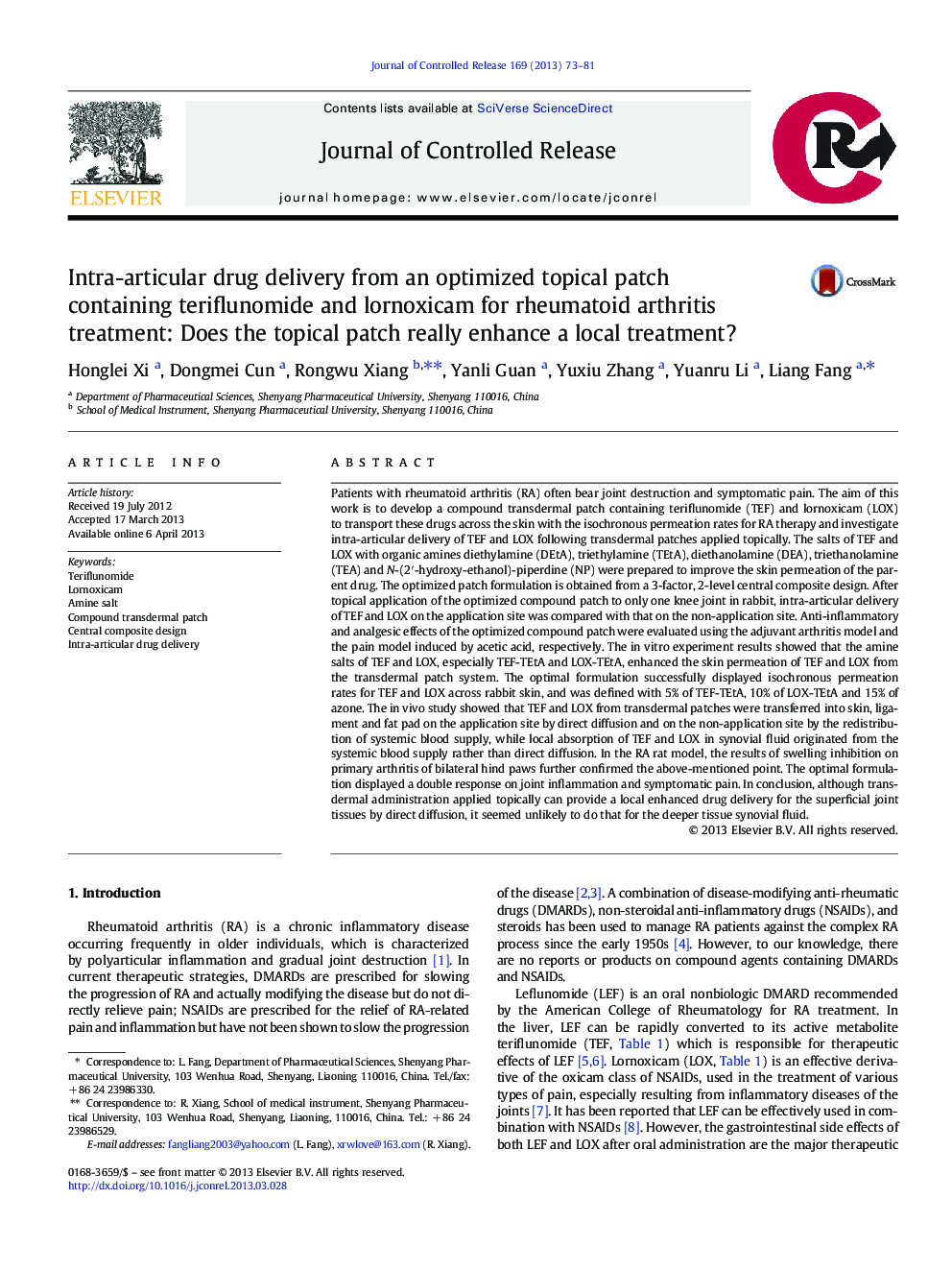| کد مقاله | کد نشریه | سال انتشار | مقاله انگلیسی | نسخه تمام متن |
|---|---|---|---|---|
| 1424186 | 1509078 | 2013 | 9 صفحه PDF | دانلود رایگان |

Patients with rheumatoid arthritis (RA) often bear joint destruction and symptomatic pain. The aim of this work is to develop a compound transdermal patch containing teriflunomide (TEF) and lornoxicam (LOX) to transport these drugs across the skin with the isochronous permeation rates for RA therapy and investigate intra-articular delivery of TEF and LOX following transdermal patches applied topically. The salts of TEF and LOX with organic amines diethylamine (DEtA), triethylamine (TEtA), diethanolamine (DEA), triethanolamine (TEA) and N-(2′-hydroxy-ethanol)-piperdine (NP) were prepared to improve the skin permeation of the parent drug. The optimized patch formulation is obtained from a 3-factor, 2-level central composite design. After topical application of the optimized compound patch to only one knee joint in rabbit, intra-articular delivery of TEF and LOX on the application site was compared with that on the non-application site. Anti-inflammatory and analgesic effects of the optimized compound patch were evaluated using the adjuvant arthritis model and the pain model induced by acetic acid, respectively. The in vitro experiment results showed that the amine salts of TEF and LOX, especially TEF-TEtA and LOX-TEtA, enhanced the skin permeation of TEF and LOX from the transdermal patch system. The optimal formulation successfully displayed isochronous permeation rates for TEF and LOX across rabbit skin, and was defined with 5% of TEF-TEtA, 10% of LOX-TEtA and 15% of azone. The in vivo study showed that TEF and LOX from transdermal patches were transferred into skin, ligament and fat pad on the application site by direct diffusion and on the non-application site by the redistribution of systemic blood supply, while local absorption of TEF and LOX in synovial fluid originated from the systemic blood supply rather than direct diffusion. In the RA rat model, the results of swelling inhibition on primary arthritis of bilateral hind paws further confirmed the above-mentioned point. The optimal formulation displayed a double response on joint inflammation and symptomatic pain. In conclusion, although transdermal administration applied topically can provide a local enhanced drug delivery for the superficial joint tissues by direct diffusion, it seemed unlikely to do that for the deeper tissue synovial fluid.
Figure optionsDownload high-quality image (271 K)Download as PowerPoint slide
Journal: Journal of Controlled Release - Volume 169, Issues 1–2, 10–28 July 2013, Pages 73–81